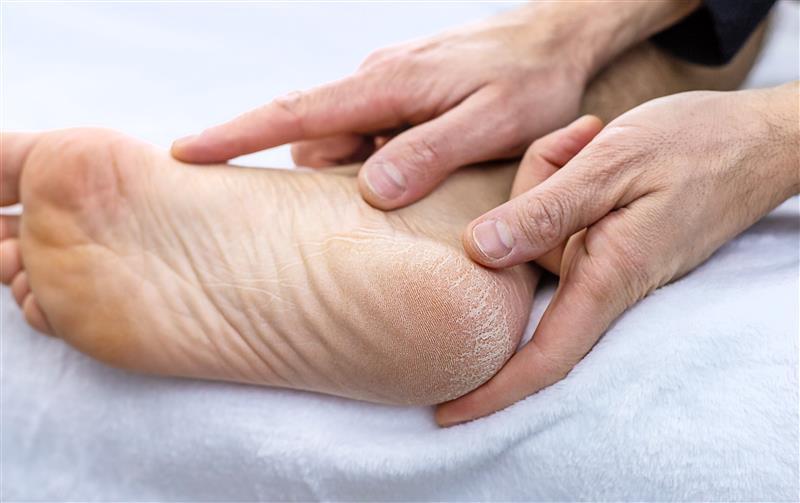Plantar fasciitis is one of the most common causes of heel pain, affecting people of all ages and activity levels. Whether you’re a runner, someone who stands long hours, or simply experiencing discomfort after rest, early intervention can make a big difference. In this post, we’ll explain what plantar fasciitis is, how to spot early signs, and how our clinic in Ocala uses advanced diagnostics and treatments to help patients return to pain-free walking.
What Is Plantar Fasciitis?
The plantar fascia is a thick band of tissue that runs across the bottom of your foot, connecting your heel bone to your toes.When it is strained or overused, small tears and inflammation can occur, causing pain, especially with the first steps in the morning or after rest.
Risk factors include:
- Overweight or obesity
- Poor arch support or foot mechanics
- Tight calf muscles or Achilles tendon
- Increase in activity (running, walking) too fast
- Poor footwear or worn-out shoes
Early Signs You Shouldn’t Ignore
- Sharp or stabbing heel pain (especially first steps)
- Pain that improves during activity but worsens afterwards
- Stiffness in the arch, particularly in the morning
- Tenderness when pressing near the heel attachment
If symptoms persist more than a few weeks, it’s wise to consult a podiatrist before it progresses to chronic pain or secondary injuries.
Diagnosis at Advanced Podiatry Specialists
- Physical examination — assessing gait, flexibility, foot structure
- Digital radiography / X-rays — to rule out bone-related causes like heel spurs Advanced Podiatry Specialists
- Diagnostic ultrasound — to visualize plantar fascia thickness or small tears Advanced Podiatry Specialists
- Gait & pressure analysis — to see how your foot mechanics contribute to strain
- Evaluation of footwear / orthotics — to see if existing support is adequate
With the correct diagnosis, we build a customized treatment plan.
Treatment Options & Home Tips
Conservative Treatments (First-line)
- Stretching & strengthening exercises — calf stretches, plantar fascia stretches, toe-curl exercises
- Supportive footwear — shoes with good arch support and shock absorption
- Custom orthotics / braces — we create custom-molded foot orthotics and ankle braces to offload stress from the fascia Advanced Podiatry Specialists
- Night splints — to maintain a gentle stretch overnight
- Activity modification — reduce high-impact exercise; switch to low-impact (swimming, cycling)
- Anti-inflammatory modalities — icing, ultrasound therapy, shockwave therapy
- Corticosteroid injections (in selected cases)
- Platelet-rich plasma (PRP) or biologic therapies for enhanced healing
- Extracorporeal shockwave therapy (ESWT)
- Minimally invasive surgical options (if conservative methods fail)
Progress is gradual. Many patients start seeing improvement within 4 to 6 weeks, but full recovery may take 3 to 6 months depending on severity.
Prevention: Stay Proactive
If your symptoms are severe or worsening, it’s important to consult a podiatrist. Severe symptoms might include intense itching, swelling, or pain. These could be signs of a secondary bacterial infection, which requires medical attention.
Spread of Infection
- Rotate your shoes — avoid wearing the same pair daily
- Maintain calf flexibility via regular stretching
- Gradually increase exercise intensity
- Monitor your weight
- Replace shoes when they lose cushioning
- Use supportive insoles or orthotics as needed
When to Call a Podiatrist
- Pain lasting more than 2–3 weeks
- Worsening symptoms despite home care
- Significant swelling or redness
- Pain that prevents you from normal walking
- Prior foot injuries or medical conditions complicating healing



